Slow fashion is a growing movement of fashion professionals, consumers, and citizens who are actively working to slow down the industry in an age of fast fashion and overconsumption.
It’s a movement I joined about a decade ago and have become so passionate about, that I’ve dedicated my career and business to educating people on slow fashion.
As a branch of the slow movement, slow fashion has a lot of similarities with the overall slow lifestyle approach and with the other slow movement domains.
For example, slow food focuses on regionality, organic production, and sustainable practices. Similarly, slow fashion is associated with closer supply chains or in-house production, use of quality natural materials, and a focus on sustainability.
Slow fashion could be described as the opposite of fast fashion. But while the movement rose in opposition to fast fashion (just like slow food was borne from a campaign against fast food), slow fashion is so more more than what it is not.
What Does Slow Fashion Mean?
Kate Fletcher — a research professor, author, consultant, and design activist — is widely credited with coining the term slow fashion. The author wrote in 2007 that “slow fashion is about designing, producing, consuming, and living better.”
Fletcher also explains that despite the adjective slow, slow fashion is really more about better quality than just slowing down production. (Though quality does take time.)
And as a sustainability thought-leader, Fletcher is clear that slow fashion considers the impacts of the industry on ecosystems as well as on workers and communities. It’s not just about slowing down for the sake of it.
In my experience, slow fashion has come to mean mindfulness throughout the entire lifecycle of a garment. But what does this all mean in practice?
Examples of Slow Fashion Practices
Again, slow fashion is more than not fast fashion!
Slow fashion is also much more than buying from certain brands, though that can be an important part of it if you’re able to get involved in that way.
Really, slow fashion is a mindset. It’s about building a long-term relationship with our wardrobe and valuing our clothes. While this can sometimes be associated with “investment pieces”, I believe that it’s important to value our clothes beyond their price tag.
Even if a garment was cheap to buy — for example a thrift store find or old fast fashion piece — that item of clothing still involved human labor and ecological resources.

For example, as a consumer and advocate, you could…
- Find your personal style rather than just following the latest trend cycles (PSA: this does not mean you have to dress in a “classic” style or in neutral colors, unless that is your preferred style.)
- Shop your closet through practices like creating outfits by using your style words
- Take good care of your clothes to extend the life of the garments in your closet and either mend them or get them repaired when needed
- Become a fashion activist and campaign for a better industry
- Push for for public change through sustainable fashion legislation
- Buy less, but better by learning how to identify high quality clothes
- Prioritize pre-loved: thrift locally, join or host a clothing swap, or browse online secondhand stores
- Discover slow fashion brands and fair trade fashion brands that embody practices in alignment with your values
- Talk about slow fashion with your friends and family
- Deepen your education and stay informed on slow fashion through podcasts, documentaries, and newsletters
- Learn how to make or modify your own clothes
And as a fashion brand or professional, you could…
- Understand fashion’s environmental impact and what your role could be in reducing it
- Ensure all workers in your brand’s supply chain are paid a true living wage
- Build genuine partnerships with suppliers, artisans, and farmers to create a traceable, ethical supply chain and ideally removing as many “middlemen” in the process as possible
- Explore alternative sustainable fashion business models
- Design intentionally, prioritizing quality over quantity of pieces
- Source more sustainable fabrics and materials
- Integrate circular fashion practices
- Go beyond sustainability with regenerative fashion practices
- Educate the next generation on slow and sustainable fashion
A holistic approach to slow fashion overlaps with ethical fashion and sustainable fashion. Slow fashion is not only about making less or slower, but also about considering the livelihoods and ecosystems involved along the way.
Slow Fashion vs. Fast Fashion
Although slow fashion is more than just anti-fast fashion, there are many key differences that stand out between slow fashion and fast fashion. Slow fashion…
Is more intentional
In a survey conducted by VICE of individuals between ages 18 and 24, 23% of respondents said that they sometimes wear an item just once before throwing it out. Eight percent of respondents said they buy more than ten items a month from online fast-fashion retailers.
A slow fashion approach understands the environmental impact of each garment and prioritizes buying less, but often better pieces. This doesn’t have to mean more expensive — you can find high quality secondhand garments, after all — but it may take more time.
The same philosophy goes for slow fashion brands. A true slow fashion brand will put quality before quantity, often producing just a few collections or only one collection the entire year.
There are even ultra-slow fashion brands that have a permanent collection that have decided to refine and perfect their designs, fit, and quality instead of constantly churning out new designs.
Has a lower environmental footprint than fast fashion
The history of fast fashion shows us that modern-day fashion brands were not the start of the industry’s social and environmental woes.
However the decades-long race to the bottom has taken the issues in the fashion industry to new lows with widespread labor exploitation, ecological degradation, and an exponential increase in waste.
Fast fashion — and really the fast fashion-ification of the entire industry — has created a waste crisis and environmental disaster.
Clothing production doubled from 2000 to 2015 while clothing utilization decreased 36%. An estimated 92 million tons of textile waste is created by the fashion industry each year.
Fast international shipping also has a massive impact — the climate group Stand.Earth reports that shipping an item by air freight can produce 80x more carbon than shipping it by sea or truck. In fact shipping by air is a leading cause of fashion’s rising emissions, the group has reported.
Values quality over quantity
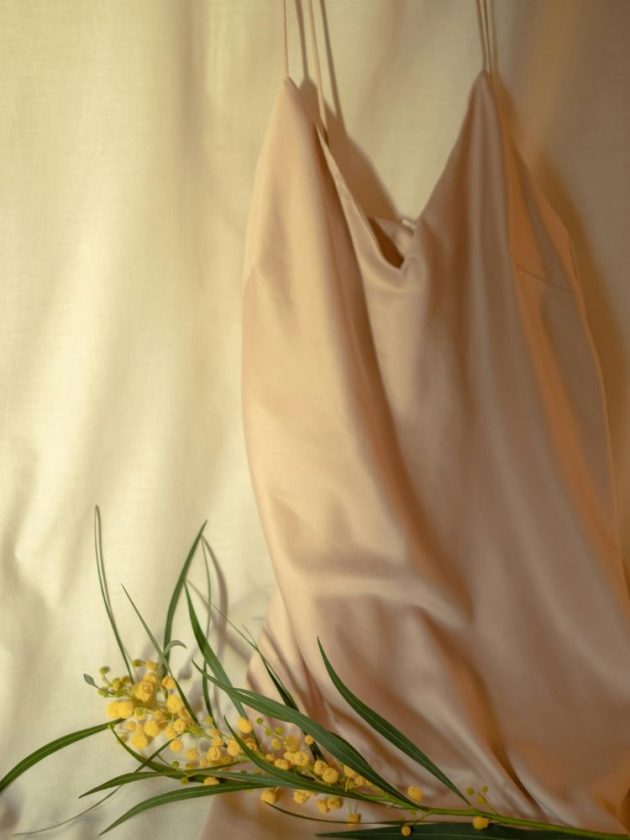
Most fast fashion brands churn out new styles weekly, or even daily, and such quick turnaround times inherently mean that corners need to be cut. It’s typical for fast fashion brands to skip the fitting process, for example, leading to a worse fit, higher return rates and more post-consumer clothing waste.
Slow fashion values quality in the form of fabric choice, fit, feel, and in the lives of the people who made that piece. These brands often produce in small batches and some even produce on a made-to-order basis.
Similar to the slow food movement, when done right, slow fashion is also about improving the quality of our lifestyles too.
I have found that when I am more deeply connected to what I wear and appreciate what I have in my closet rather than always chasing the next trend, trying to look like someone else, and on the rollercoaster of dopamine shopping, I feel more satisfied overall.
It may sound strange, but I have a deeper relationship to the pieces in my closet too. I will always treasure the dress I mended with my grandma; I treat the sweater I’ve worn 200 times as a comfort blanket on a tough day; I can rely on a certain pair of well-loved shoes to give me a confidence boost.
Contrast this with my former constant trips to the mall, always looking for a bit of a dopamine hit from finding a good deal — and then coming home to realize that I don’t even like the garment all that much.
Puts people before profit
While profit is part of all for-profit businesses, including even small conscious fashion brands, the goal is not profit at all costs. Slow fashion values sustainable practices and paying people fairly, which means that it costs more. This is the true cost of clothing.
Contrast that with fast fashion which resorts to forced labor, not paying workers their owed wages, and use of toxic chemicals in clothing that impact both workers and wearers.
And as a “consumer” — or individual that buys clothing — following slow fashion values also involves a level of care for the people who made our clothes.
This could mean looking for ethical brands. But it also holds true even if we bought an item secondhand or are wearing a fast fashion garment already in our closets. By caring for our clothes, we are valuing the people who made them.
Another way that slowing down our fashion consumption impacts people is the end of life of our garments. Donating our clothes is often seen as an easy, more ethical way to clear our clutter and make space for the new. But what happens to our donated clothes is not always pretty.
The influx of massive quantities of low-quality clothes has destroyed local textile economies in the Global South, polluted waterways, and left many resellers in precarious financial positions.
What Are Slow Fashion Brands?
Here are some elements to look for when you’re searching for a slow fashion brand.
- Offers longer-lasting collections designed intentionally rather than pushing out new styles constantly.
- Produces in small batches or on a made-to-order basis. Relatedly, a brand is producing intentionally simply can’t produce as much. If you see a brand coming out with hundreds of styles each month, that’s a red flag.
- Creates high quality garments. If a brand is serious about quality, they will tell you and show you. Look at the fabric content, check the seams, observe the hand-feel or look at close-up photos, try on the product or look at online reviews.
- Manufactures sustainably. Check if the brand is using sustainable fabrics and dyes, takes steps to minimize or eliminate waste through zero waste fashion practices, and is minimizing their pollution and carbon emissions through green shipping, renewable energy use, and/or other initiatives.
- Has transparency and traceability of their supply chains. If a brand is producing intentionally, they’ll be able to track each step of the production process and ideally have direct relationships with the suppliers or artisans they work with. The best case scenario is when a brand produces in-house either in a facility or just in their studio if they are a micro fashion brand. This enables maximum transparency.
Cheatsheet: Our guide to slow fashion brands
Slow Fashion is Nothing New!
As outlined in detail by Sofi Thanhauser in the book Worn: A People’s History of Clothing, before the Industrial Revolution, most garments were handmade in small batches slowly and relatively locally to the customer.
Slow clothing was the default way we engaged with what we wore for much of human history!
The introduction of textile machinery in England in the 18th and 19th centuries meant that fabric and garments could be produced in larger quantities at cheaper prices — and with lower quality standards.
While mass production made clothing more affordable for the masses, the industrialization of fashion also made fashion more homogenous, and it impacted the livelihoods of artisans and craftspeople. Instead of a fashion economy of small-batch makers, independent designers, skilled weavers and expert tailors, the fashion economy shifted to one of mechanized factories with profit-seeking factory owners and underpaid laborers.
This is important to point out because fast and exploitative fashion does not have to be the default and it’s not our only option.
While we may not be able to (or want to) reverse industrialization and the many conveniences it has brought us, we can look to the past to inspire a better fashion future.
The Future of Slow Fashion
So what is the future of fashion? Is slow fashion our future? I would like to hope so!
While I’m absorbed in the slow fashion bubble and am exposed to it far more than the average person, I do see several encouraging signs in the broader economy and culture.
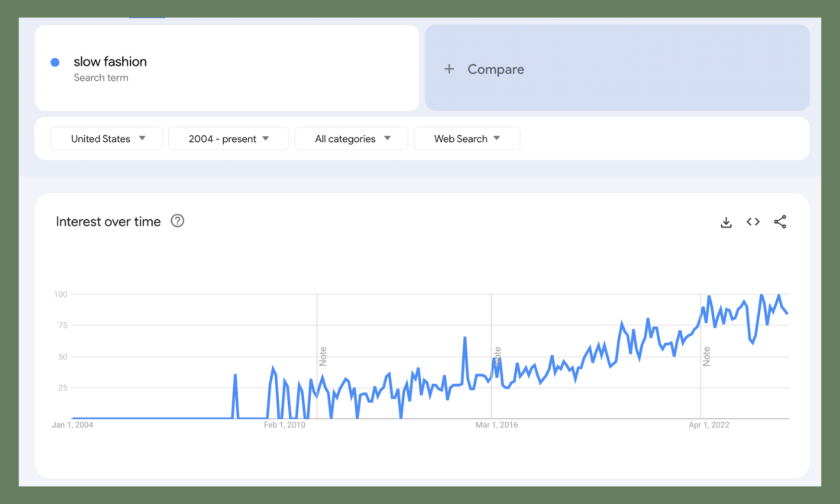
- The global secondhand market is predicted to reach $350 billion by 2028 according to thredUP’s resale report.
- The same report shows that secondhand apparel is growing 3X faster than the overall apparel market.
- UK department store Selfridges wants to transform the way we shop and have half of transactions be resale, repair, rental, or refills by 2030. Repair service SOJO has a permanent space in Selfridges.
- Searches for “slow fashion” on Google in the United States have been on the rise, according to Google Trends (see image above).
- The EU has been taking several steps to make the fashion industry more sustainable, partially by slowing down production. For example, the EU aims to stop overproduction and overconsumption of clothing through the Waste Framework Directive and the EU’s design requirements will ensure textiles are easier to repair and that they last longer.
- While the United States is behind Europe on sustainable fashion legislation, the proposed Americas Act Bill does include provisions to propel domestic circularity in textiles. (The goal here isn’t necessarily to slow down the industry’s production, but it could help support the secondhand and repair economies, which are part of the slow fashion movement.)
We’re still very much in the nascent stages of the slow fashion movement, but large-scale changes like a younger generation that looks secondhand first and governmental bodies that take textiles-related legislation seriously could be instrumental in making slow fashion practices the new norm.
For more educational resources, read What is Sustainable Fashion? and What is Ethical Fashion?
The post What is Slow Fashion, Really? appeared first on Conscious Life & Style.
Green Living
How Toad&Co’s Clothes Help Everyone Enjoy the Outdoors
This is a sponsored article about a brand that was independently assessed by our rigorous ratings system. We’re proud to only collaborate with “Good” and “Great” rated brands. Learn more.
US brand Toad&Co has a socially and environmentally responsible approach to clothing, creating pieces inspired by the outdoors and with a lower impact on the environment. Not to mention an enduring commitment to helping everyone get outdoors through its work with non-profits. Read on to discover the brand’s environment-first ethos.
Focusing on what matters most
“We make feel-good clothes for positive impact—fostering community around doing good, enjoying life’s simple pleasures, and embracing the unexpected,” says Sarah Palladino, director of people and impact at Toad&Co as she introduces the Californian brand. This “simple pleasures” concept applies to Toad&Co’s approach to design, too, and prioritises quality and responsibility over trend-led items. This, in turn, means the brand focuses its energy on clothes that are comfy and practical enough for everything from work to outdoor exploring, and on maintaining its ongoing commitments to using lower-impact materials, partnering with cleaner factories, and looking for new ways to do more with less.
Since day one, it’s been about more than just clothes. From choosing sustainable practices in every corner of our business to supporting programs that protect the planet and make the outdoors more accessible to everyone—knowing we stand for more is what keeps us going
Gordon Seabury – CEO at Toad&Co
Lower-impact materials and producer responsibility
Opting for lower impact materials is one of the core ways brands can address their impact on the planet: “Sustainable materials make a world of difference,” Toad&Co says. “We use organic cotton, recycled fibres, and other high-quality materials known for low-impact growing and cleaner manufacturing.”
The brand’s selection of more sustainable materials includes organic cotton, hemp, TENCEL Lyocell, and recycled fabrics like wool, cotton, and polyester. It also looks to third party clothing certifications like bluesign®, OEKO-TEX® STANDARD 100, and Global Organic Textile Standard, and it publishes its list of restricted substances for all to see.
Toad&Co also operates a resale platform, called ToadAgain, online and at its IRL store in Maine, US, to keep its clothes in the loop.
Supporting non-profits and access to the outdoors
Toad&Co donates 1% of its profits to organisations working to empower others and, in particular, enable better access to the outdoors for all.
In 1996, Toad&Co partnered with Search, Inc. to co-found the Planet Access Company, a full-functioning warehouse that trained and employed up to 70 adults with disabilities annually.
Determined not to stop at the front door, the brand also co-founded Search for Adventure in 2004, a unique travel program to facilitate vacations for adults with disabilities. Over 20 years later, the social venture partnership has evolved—and includes a flagship store in Chicago, a program called Visibility Arts that nurtures creativity through sharing Search, Inc. artist’s work, neurodiversity and disability awareness training, and an expanded Search for Adventure program. In 2024, the brand supported 147 nights of camping for adults with disabilities through the program.
We give back to—and partner with—organisations that align with our three pillars of giving: conservation for human enjoyment, equity and accessibility, and do the right thing
Sarah Palladino – director of people and impact at Toad&Co
One of Toad&Co’s key partnerships is with Brave Trails, which is dedicated to LGBTQ+ youth leadership, to support it in putting on accredited camps, mentorship programs, and meet-ups for LGBTQ+ youth.
Shop favourites from Toad&Co’s new collection
Read on to discover some of the standout items that balance style with practicality from Toad&Co’s lineup.
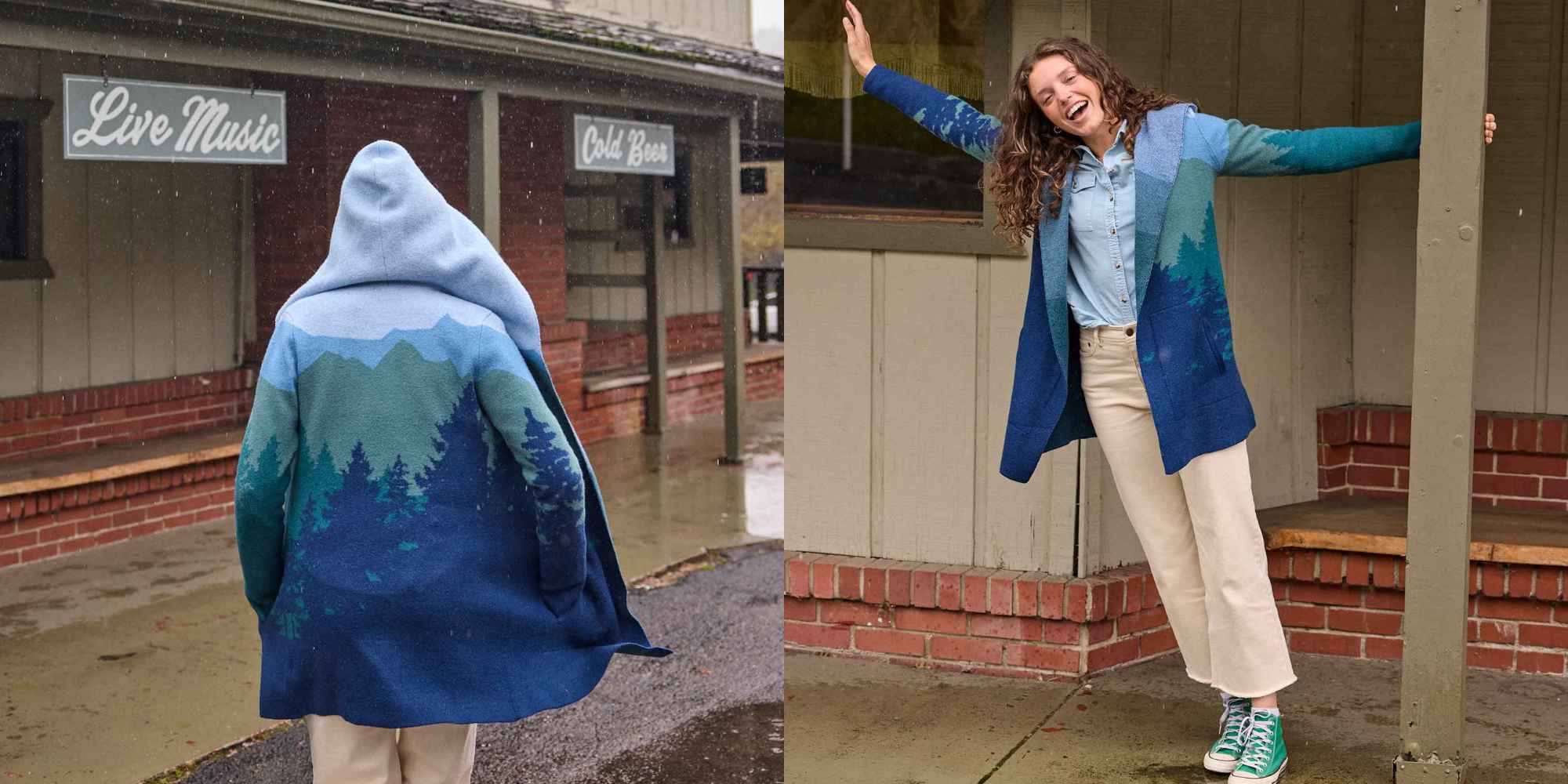
Woven with a beautiful alpine jacquard pattern, this hoodie is made from non-mulesed Merino wool and features pockets at the sides. It’s ideal as a mid-layer under a longer coat when you’re out exploring, or as a cosy item for grabbing a post-walk hot chocolate.
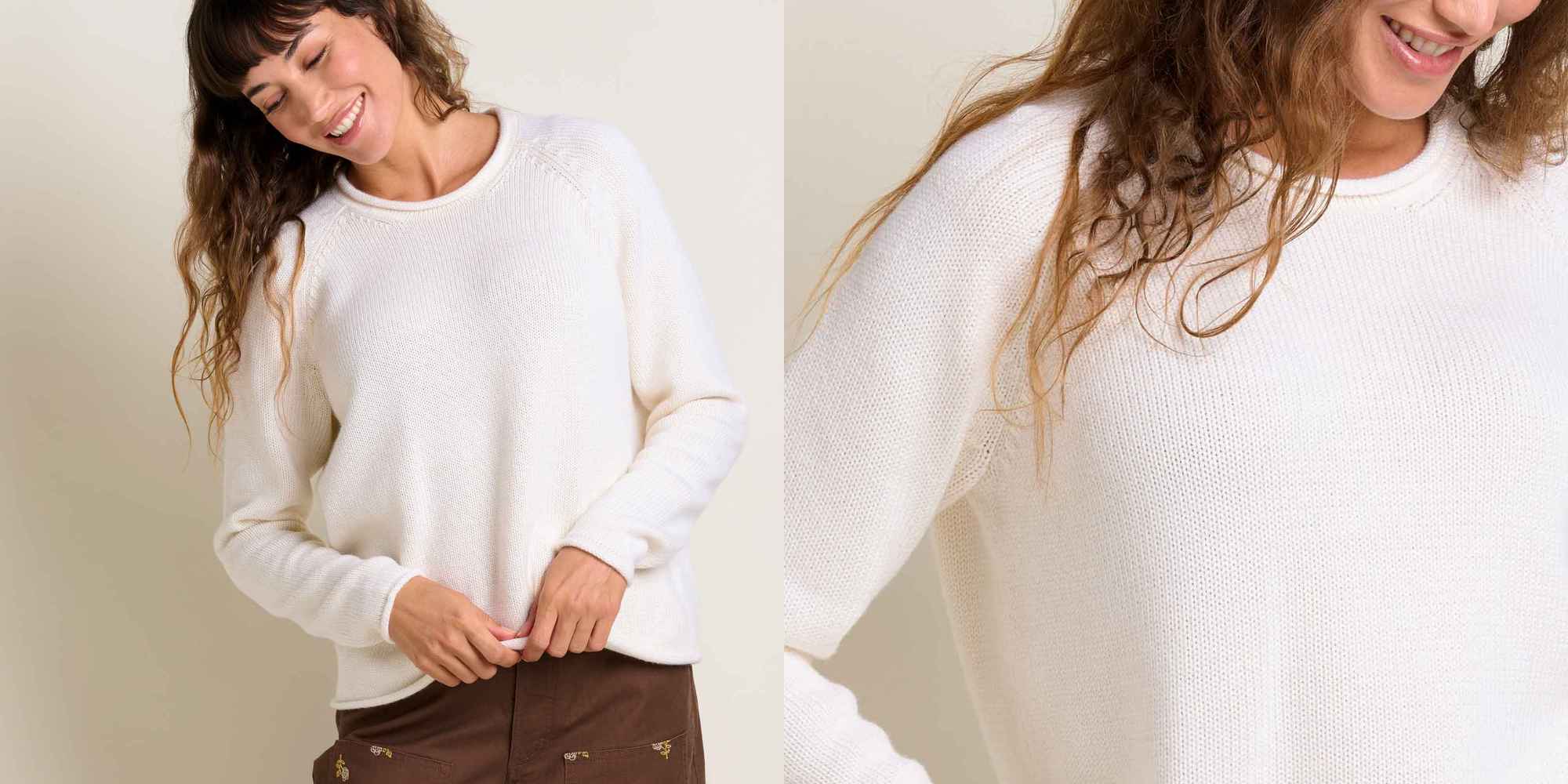
This Alpineglo sweater is a blend of 50% organic cotton and 50% non-mulesed Merino wool, so it’s going to help regulate your temperature in most climates. On top of that, the neutral tone and straight fit make it really versatile—you’ll be reaching for it on the regular.
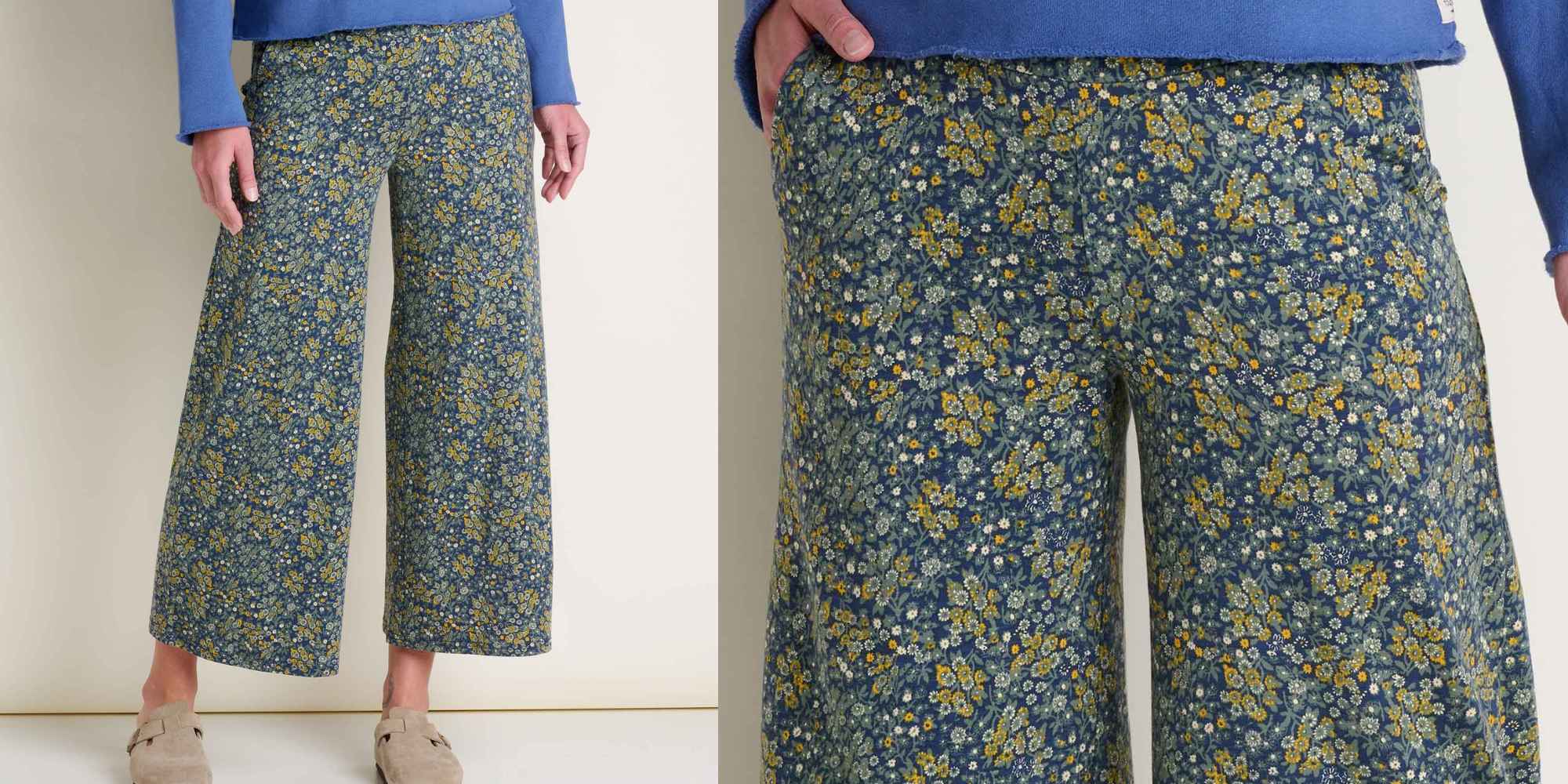
Toad&Co calls these cropped trousers “sweatpant comfortable, going-out presentable”, which makes sense, given they’re made with organic cotton and Tencel Lyocell for softness and have a comfortable wide waistband, not to mention a pretty floral pattern.
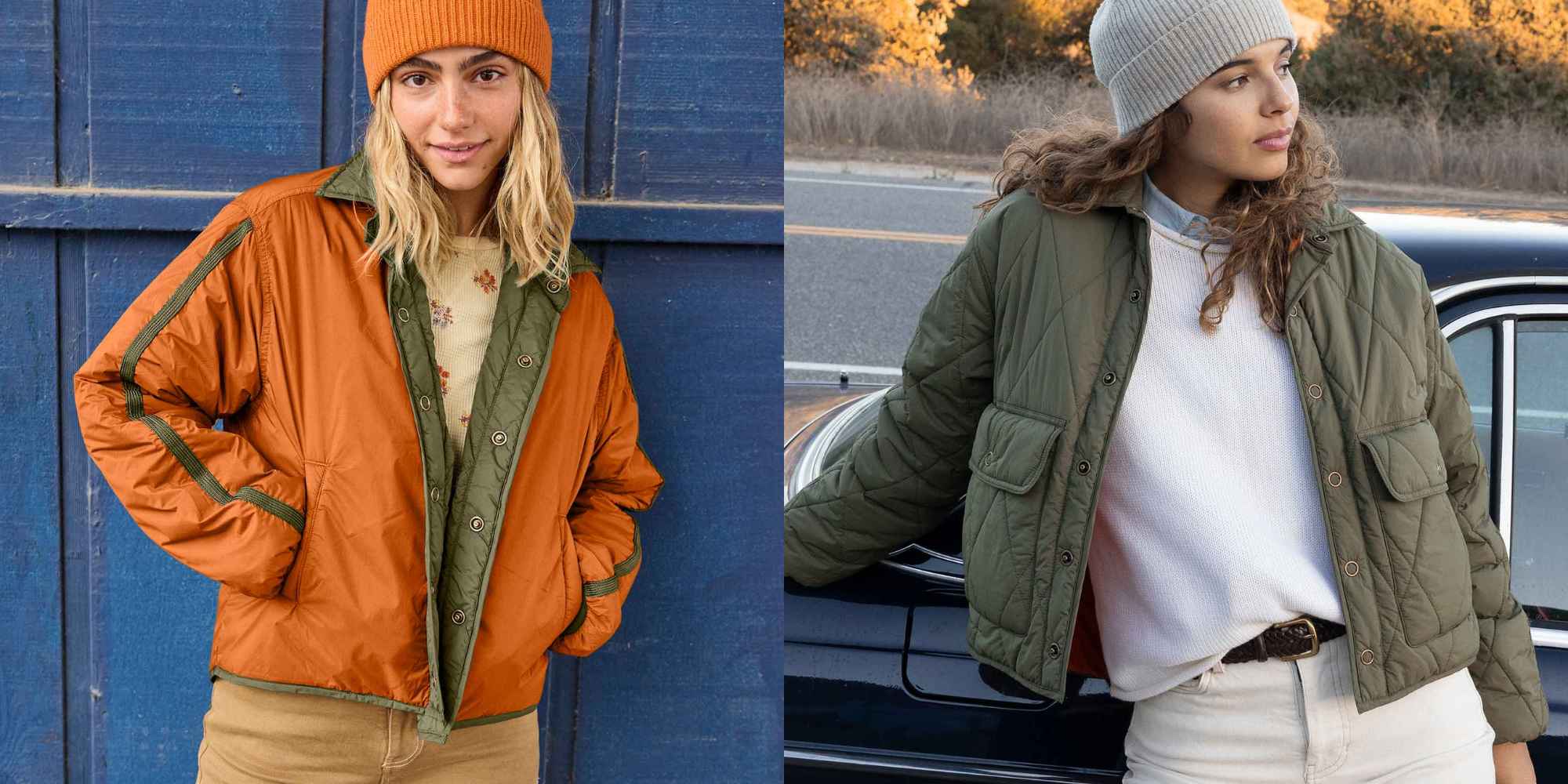
This Nomader jacket is reversible, packable, and water-resistant. In other words, it’s the ideal item to take with you for outdoor adventures. It’s made from recycled nylon and lightly quilted for warmth.
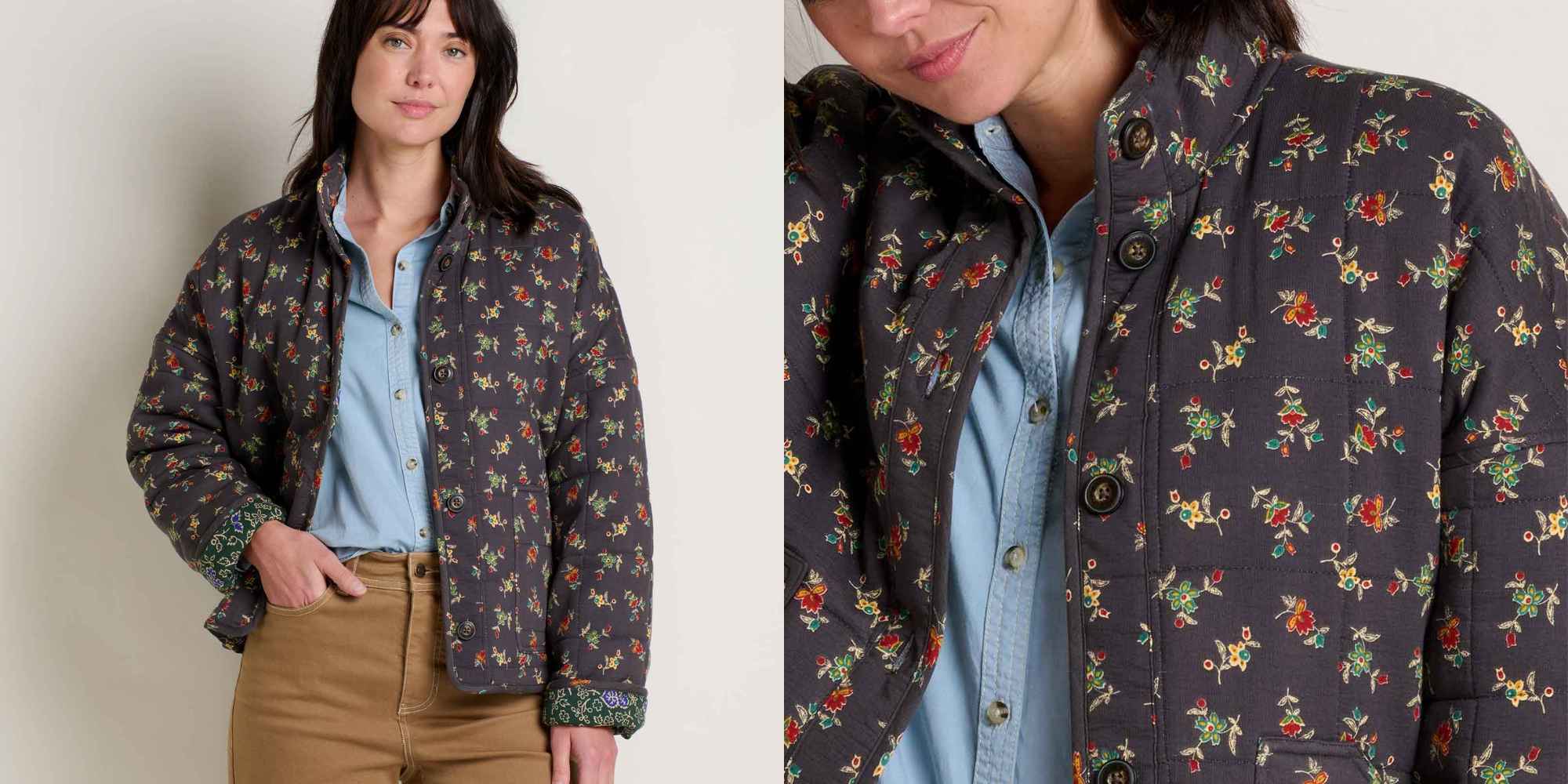
Toad&Co picked the crepe-like organic cotton for this jacket so that you could fold it away in a bag and have it still look presentable when you pull it out. It’s also packed with recycled polyester padding for extra warmth.
 Balsam Cutoff TrousersThese Balsam Trousers are made with a tiny bit of stretch and a special waistband for comfort, so they’ll flex with you and feel good all the time. The neutral brown colour also goes with so many options.
Balsam Cutoff TrousersThese Balsam Trousers are made with a tiny bit of stretch and a special waistband for comfort, so they’ll flex with you and feel good all the time. The neutral brown colour also goes with so many options.These Balsam Trousers are made with a tiny bit of stretch and a special waistband for comfort, so they’ll flex with you and feel good all the time. The neutral brown colour also goes with so many options.
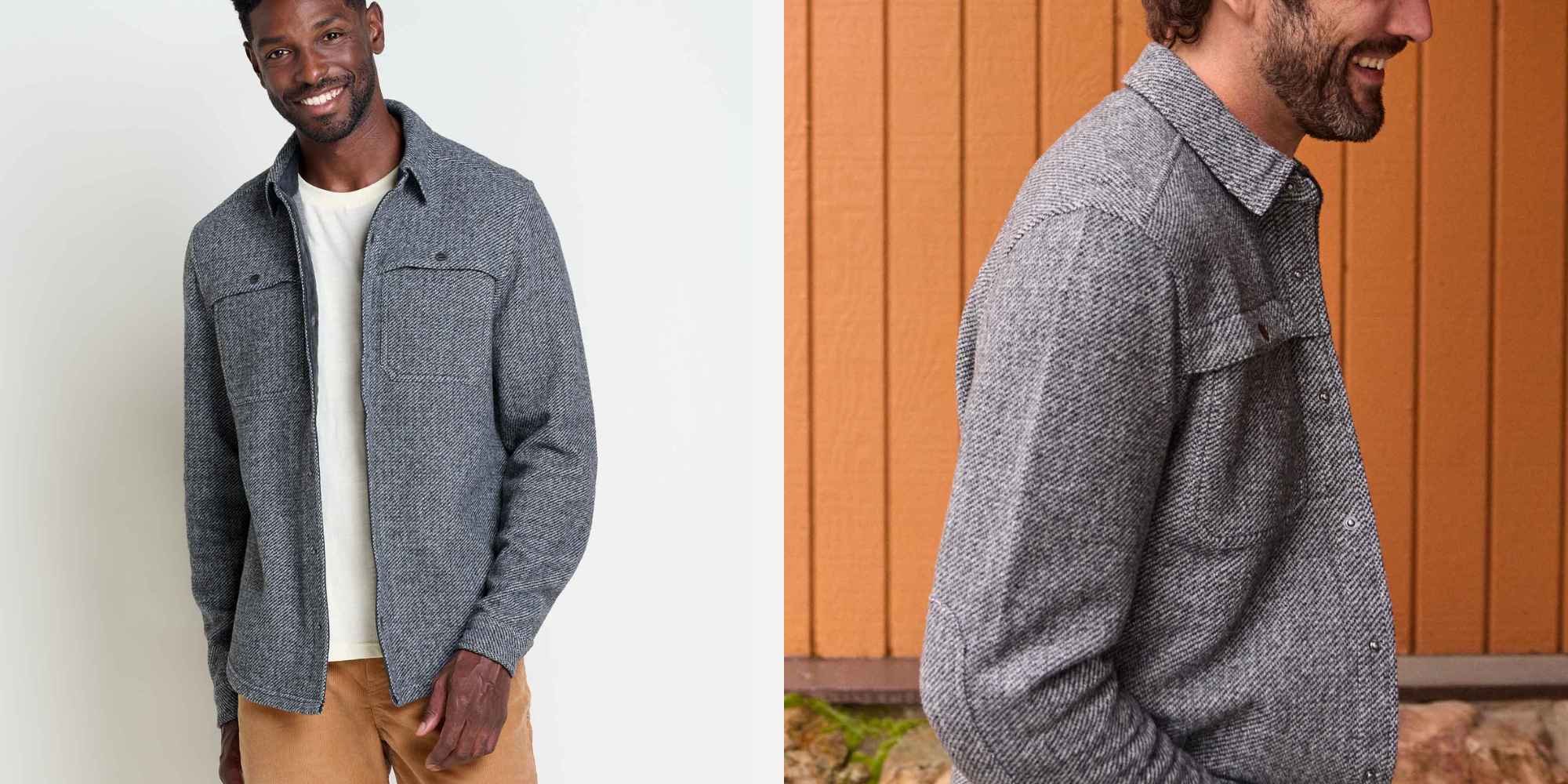
Going from a walk to dinner? From the office to drinks? This Kennicott shirt jacket fits the bill for all of the above. The smart twill fabric incorporates recycled Italian wool.

This is Toad&Co’s Re-Form Herringbone: a blend of recycled cotton and polyester that offers a soft drape and an attractive herringbone weave that looks smarter than the average checked shirt.
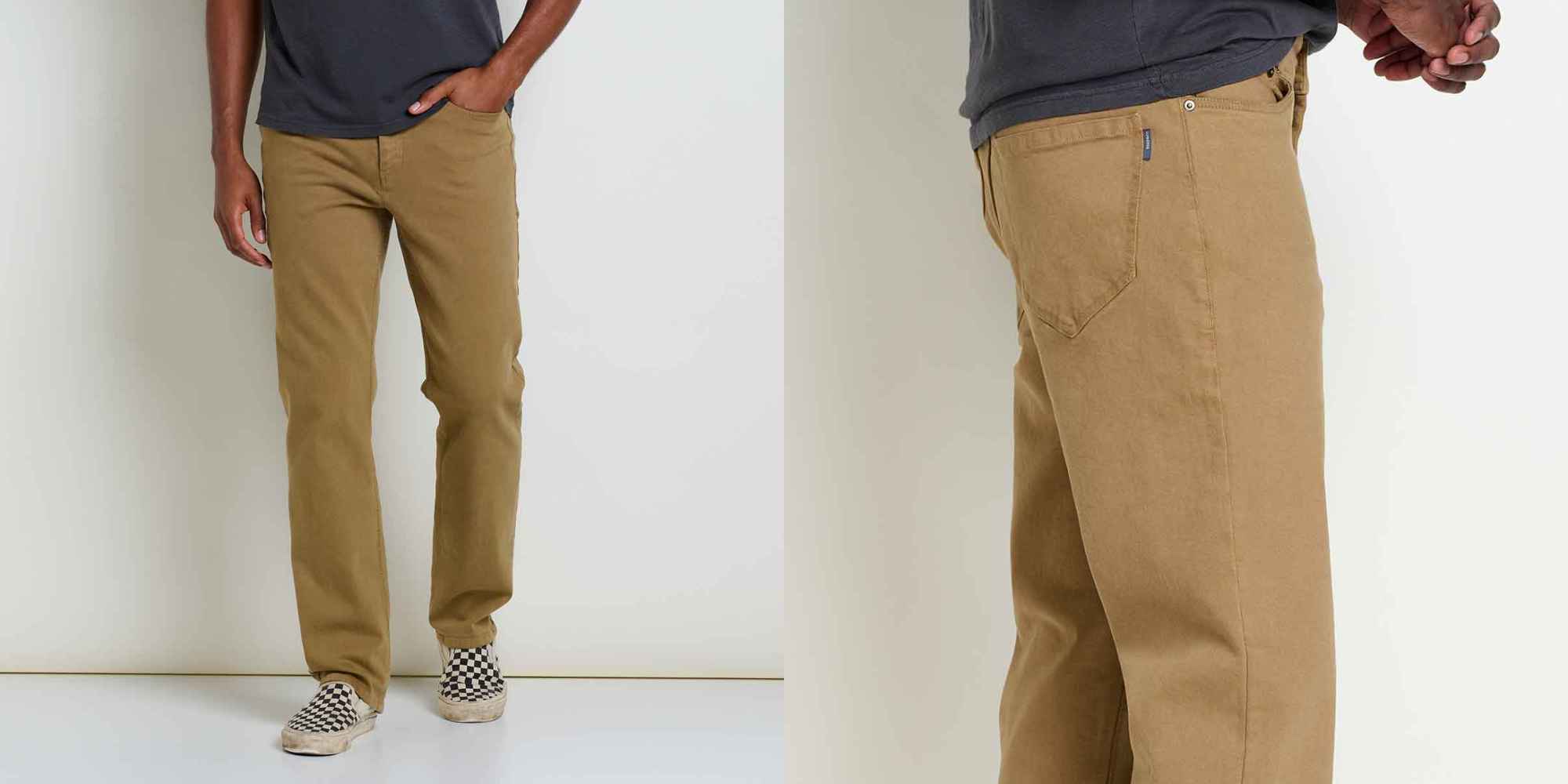
Like the women’s equivalent, these Balsam trousers have a touch of stretch and a comfortable ‘FlexForm’ waistband that mean they’re going to feel comfortable from the get-go—and you won’t need to worry about a belt, either.
Discover more of Toad&Co’s clothes.
The post How Toad&Co’s Clothes Help Everyone Enjoy the Outdoors appeared first on Good On You.
Green Living
50 DIY Christmas Presents Anyone Can Make
Last Updated on November 21, 2025
If you’re on the handmade Christmas kick this year, you’re not alone. So am I!
I’m choosing presence over presents this year and bringing back the 90s Christmas I loved as a kid – simple, crafty, low pressure, and full of small moments that feel meaningful.

If you want to gift thoughtfully, and without breaking the bank, these DIY Christmas presents are for you. There’s something for everyone on this list – whether you prefer easy or complex DIYs.
I’ve included all kinds of DIYs – beauty, cooking, fashion, and practical gifts alike. Best of all? Many of these tutorials are zero waste (or close to it).
what are good homemade Christmas gifts?
Good homemade Christmas gifts include consumable items, like homemade nut butters, vanilla extract, or jams. But not all homemade gifts are edible – you can also make items like bath bombs, candles, body scrubs, beeswax wraps, and so much more.
If you’re extra crafty, you could even make wooden gifts (like shelving or tablet holders), ceramic items (like mugs or jewelry), or knitted/crocheted pieces (like blankets, scarves or hats).
It all depends on your level of skill, time at your disposal, and ingredients/materials you have access to.
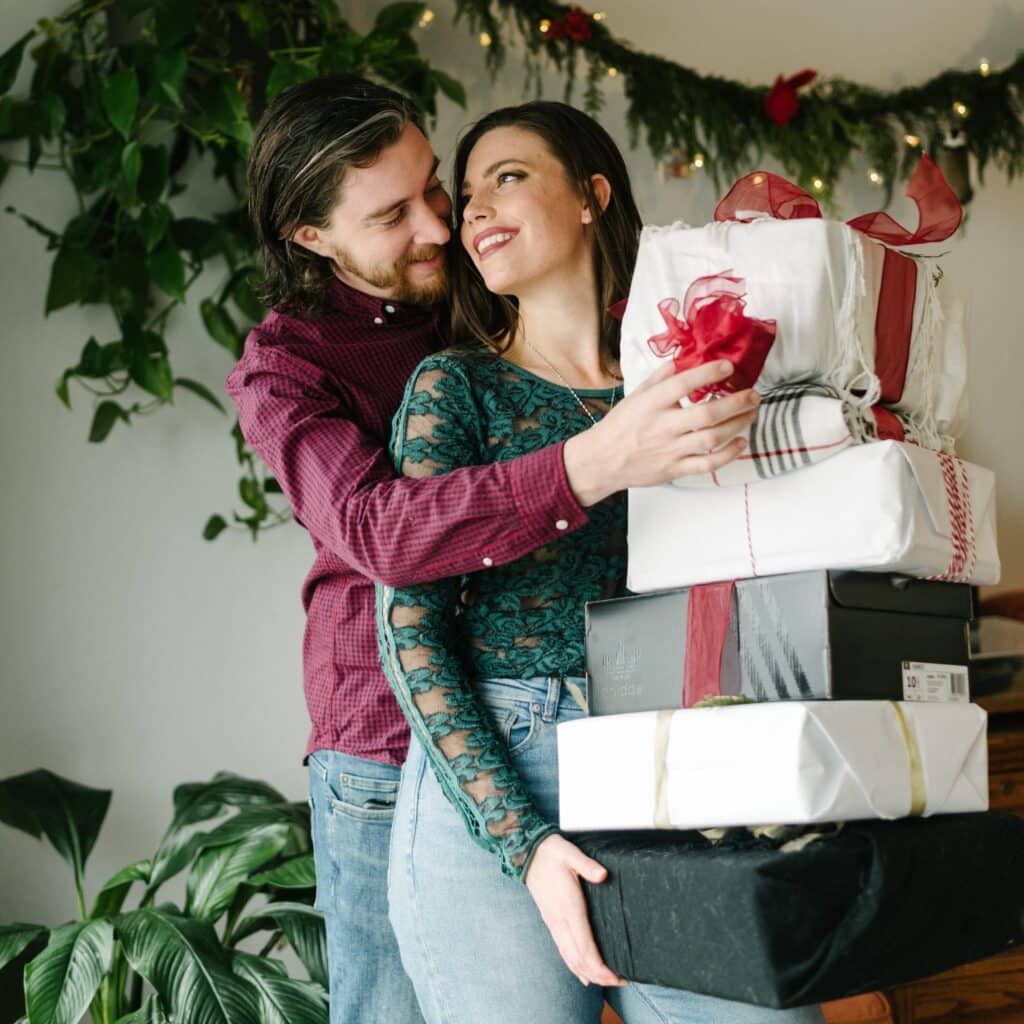
what are good inexpensive Christmas gifts?
Some good inexpensive Christmas gifts are DIY cornstarch ornaments, handmade body or lip scrub, seasoned salt blends, and homemade treats (like these chocolate chip cookies or vegan sugar cookies).
And never forget to hit up your local thrift store – you can find so many great items that would make affordable gift baskets!
Wrapping DIY Christmas gifts also doesn’t have to be expensive. Reusing gift bags and ribbons from last year, upcycling packaging paper, or even repurposing a scarf for furoshiki wrap are all low-waste and affordable!
RELATED: Gift Wrapping: How to Keep It Easy, Eco and Chic
how can I make a last minute gift?
You can make a last minute gift by getting crafty using the materials you have on hand!
For example, if you have a cardboard box, why not try making an upcycled cardboard dollhouse, vehicle, or pirate ship for a child? For adults, a DIY storage container or a shoe rack works.
One of my fav last minute gifts is scented bath salts in an upcycled glass jar – just a little Epsom salt and essential oil blends will do the trick!
Here’s my list of DIY Christmas gifts – something for everyone and every skill level.

- Bath salts
- DIY makeup like mascara/eyeliner, or lip to cheek
- Bath bombs
- Lip scrub
- Lip balm
- Face mask
- Body lotion
- Natural perfume
- Dry shampoo
- Shampoo bar
- Body soap
- Deodorant
- Rose water toner
- Hand-poured coconut/soy/beeswax candles
- Simmer pot in a jar
- Cookie, brownie, soup mix or hot cocoa mix in a jar
- Handmade seasoning blends
- Vanilla extract
- Vegan caramels or plant-based butter wrapped in compostable parchment paper
- Herb or citrus infused olive oil
- Peanut butter + jam
- Beeswax wraps
- Apple or pumpkin butter
- Sourdough or no-knead artisan bread
- Finished embroidery hoops
- Embroidered pillows, tote bags, clothes or cloth napkins
- Sewn cotton rounds
- Knitted scarf, hat, gloves, sweater, or blanket
- Hand warmers
- Quilt blanet, quilted coat or quilted wallet
- Tie dyed secondhand silk scarves, clothing or sheets
- Hand painted or drawn artwork
- Air dry clay paint palette
- DIY wooden frame for paintings or print photos
- Handmade ceramics (mugs, chawan, chasen holder, vase, spoon rest, etc.)
- Woodworked items (birdhouse, shelving, bookcase, wall guitar mount)
- Carving wooden bowls by hand
- Natural branch coasters
- Plant propagations in one of these DIY planters
- Seed balls using native seeds
- Handwoven baskets or bowls
- Macrame produce bag
- Macrame plant hanger
- Fabric paper mache bowls
- Upcycled paper earring jewelry
- Clay earrings
- Handmade plush toys
- Felt ‘food’ toys
- Wooden toys (like vehicles, blocks, or dollhouses)
- Knit or crocheted baby clothes
What do you think of these DIY Christmas presents? Let me know in the comments!
The post 50 DIY Christmas Presents Anyone Can Make appeared first on Going Zero Waste.
Green Living
8 Best Non Toxic Rugs For a Sustainable Home
Last Updated on November 6, 2025
Did you know most rugs are made from polyester, aka plastic? Arguably, a good chunk of our furniture and home decor is nowadays.
And lets not forget – rugs can get a lot of foot traffic. If it’s made from polyester, chances are those plastic fibers are going to shed and get onto us. Or worse, in us.

Some of the links in this post are affiliate links; for more information please see my disclosure policy.
Microplastics have been found in human feces, blood, and even placentas. And according to a study from Stanford University, those who had microplastics in their plaque had a higher risk of heart attack, stroke and death than those who didn’t.
On top of this, 5 billion pounds of rugs go to waste each year – that’s 2% of total US landfill. And if they’re made from plastic? They won’t biodegrade.
It’s more important than ever to reduce our exposure to microfibers where we can. Which is why I’ve rounded up the best non toxic rugs on the market.
what is the least toxic rug?
The least toxic rug will have sustainable materials and use no harsh chemicals (like PFAs) in their production.
Here’s what to look for when purchasing a non-toxic rug:
- Sustainable materials, such as organic cotton, jute, sisal or wool
- Low-waste packaging + delivery
- Natural, non-synthetic dyes
- Third-party certifications like OEKO-TEK, Fair Trade, GOTs
- Easy to spot-clean or machine wash
- Available in various styles, patterns + colors to suit your needs
do all rugs have PFAS?
According to Department of Toxic Substances Control (DTSC), only four samples of 201 carpets and rugs were found to contain more than 100 parts per million in their fibers, indicating PFAS were intentionally added to the products.
However, while PFAs may not be a huge concern for rugs, microplastic pollution is, specifically if your carpet is synthetic. Your best bet is to check the material your rug is made from and choose natural fibers whenever possible.
what is the best non-toxic rug for nursery?
The best non-toxic rug for a nursery would be made from natural materials like wool and organic cotton (which are soft on baby’s skin).
I recommend also checking for natural latex for the rug backing and underlay pads. Brands on this list that offer kid-friendly sizes and patterns include Lorena Canals, Nestig, Quince, and Loomy (more on each below).
what brand of rugs are non-toxic?
The brands of rugs that are non-toxic are listed below. I’ve gone ahead and highlighted some of my favorite features of each brand, but it isn’t an exhaustive list. Be sure to check out their websites for more information.

1. hook and loom
- Various rug sizes, shapes + patterns
- Made from GOTs certified organic cotton, recycled cotton + wool
- No dyes or harmful chemicals
- No latex
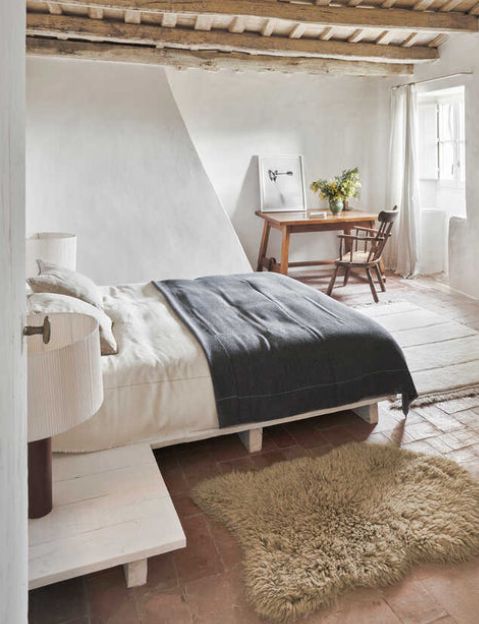
2. lorena canals
- Various rug sizes, shapes + patterns
- Handmade by artisans using recycled materials like organic cotton + wool
- Nontoxic dyes
- Make your own option
- Machine washable
- Rugcycled line made from recycled materials in their own factory
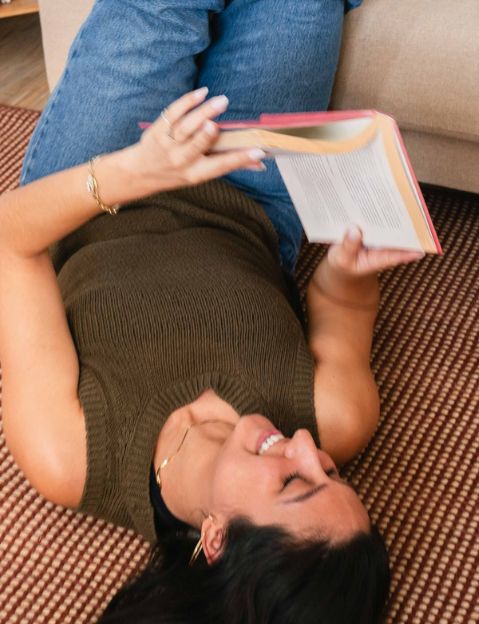
3. sabai
- Field rug
- Woven using wool + jute
- Available in 3 varying sizes
- Rug pad add-on available for reduced movement
- Certified B Corporation

4. quince
- Various sizes + patterns, best known for vintage-inspired looks
- Made from natural materials like wool, jute, + cotton
- Handcrafted by artisans in India
- Transparent pricing practices
- Compostable poly bags + recycled plastic mailers

5. west elm
- Rugs for every area of the home, in varying sizes
- Made from wool, jute, hemp, cotton, TENCEL + recycled materials
- Handspun by skilled artisans in India
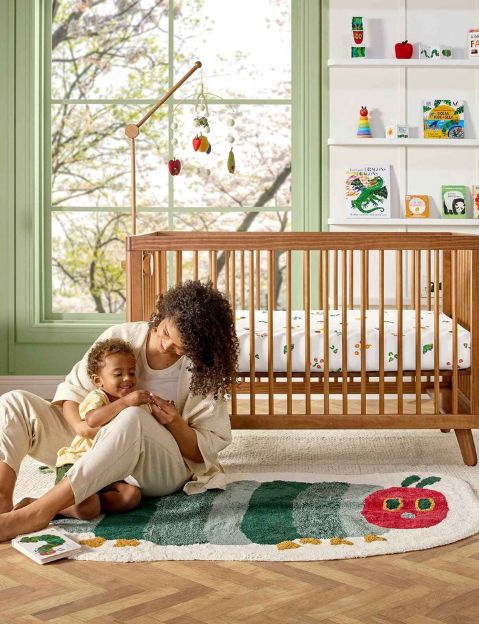
6. nestig
- Area + washable rugs made with fun shapes/designs for babies + kids
- Washable rugs made with organic cotton + nontoxic dyes
- Area rugs made with cotton + each colored element crafted from recycled cotton
- Handmade in Brazil

7. cold picnic
- Various rug shapes + sizes, abstract patterns + bold colors
- Made with wool, bamboo silk, cotton, hemp, + deadstock materials
- Designed in a Brooklyn studio, handmade by artisans in India
- Committed to reducing packaging waste where possible
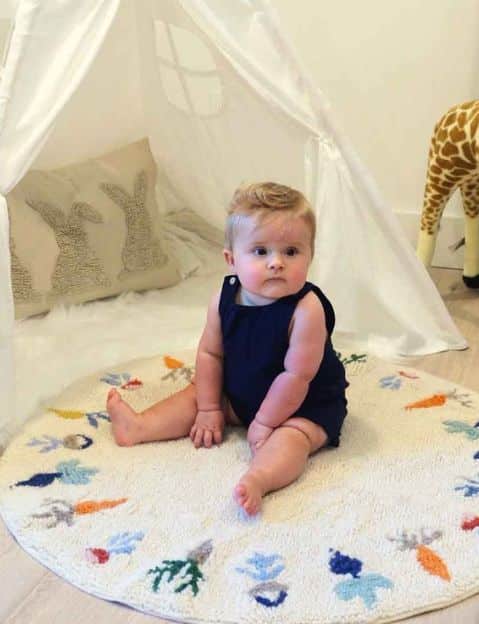
8. loomy
- Various rug sizes, shapes + patterns
- Made from banana silk, hemp, jute, recycled fiber, viscose, or wool
- Any colored yarn dyed using low-impact techniques
- Handcrafted by indigenous artisans
So what do you think of these non toxic, sustainable rugs? Let me know in the comments!
The post 8 Best Non Toxic Rugs For a Sustainable Home appeared first on Going Zero Waste.
-
Climate Change4 months ago
Guest post: Why China is still building new coal – and when it might stop
-
Greenhouse Gases4 months ago
Guest post: Why China is still building new coal – and when it might stop
-
Climate Change2 years ago
Spanish-language misinformation on renewable energy spreads online, report shows
-

 Greenhouse Gases2 years ago
Greenhouse Gases2 years ago嘉宾来稿:满足中国增长的用电需求 光伏加储能“比新建煤电更实惠”
-
Climate Change Videos2 years ago
The toxic gas flares fuelling Nigeria’s climate change – BBC News
-

 Climate Change2 years ago
Climate Change2 years ago嘉宾来稿:满足中国增长的用电需求 光伏加储能“比新建煤电更实惠”
-

 Carbon Footprint2 years ago
Carbon Footprint2 years agoUS SEC’s Climate Disclosure Rules Spur Renewed Interest in Carbon Credits
-
Renewable Energy5 months ago
US Grid Strain, Possible Allete Sale



